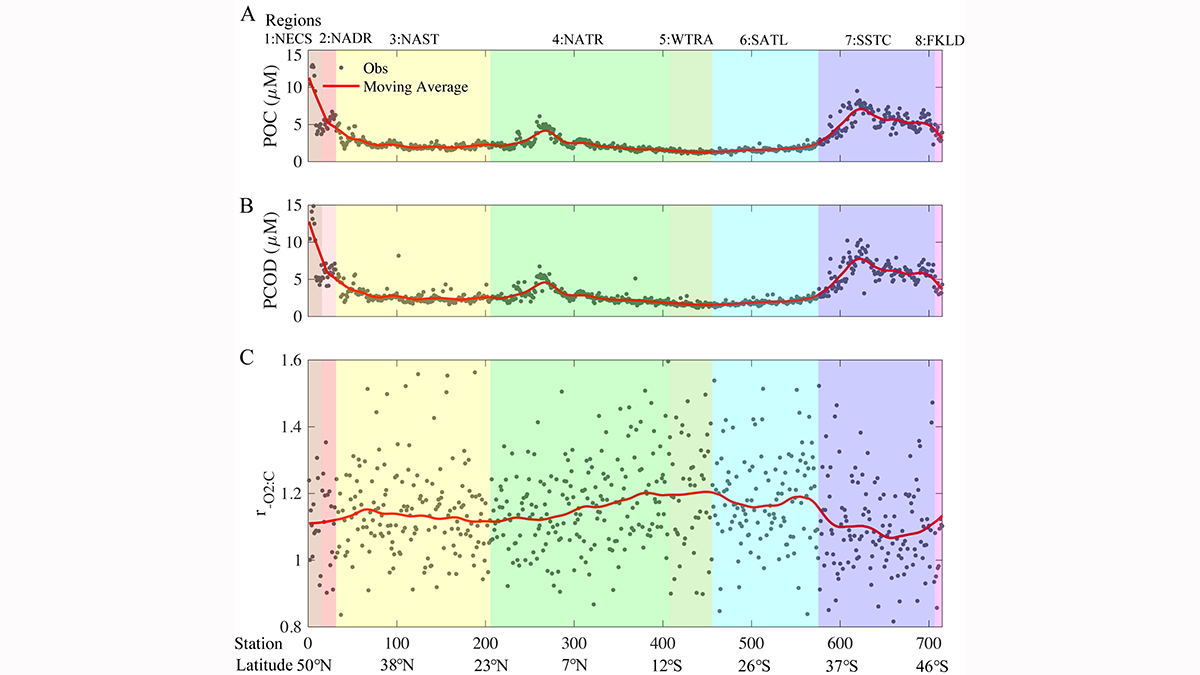Source: AGU Advances
Editors’ Highlights are summaries of recent papers by AGU’s journal editors.
Organic matter respiration demand is an important unknown in predicting ocean oxygen levels. Moreno et al. [2022] use observations from the Atlantic and Pacific Oceans estimate the amount of oxygen required to oxidize particulate organic matter, the respiration quotient; a key parameter linking ocean oxygen and carbon cycles. Their analysis shows that regional variability in the respiration quotient results from a hierarchy of factors, with primary controls from temperature and nutrient availability, which in turn affect plankton community size structure. The interconnectivity of the complex interactions among biological processes, and carbon, oxygen and nutrient cycling have implications for understanding current and future ocean oxygen levels.
Citation: Moreno, A. R., Larkin, A. A., Lee, J. A., Gerace, S. D., Tarran, G. A., & Martiny, A. C. [2022]. Regulation of the respiration quotient across ocean basins. AGU Advances, 3, e2022AV000679. https://doi.org/10.1029/2022AV000679
—Eileen Hofmann, Editor, AGU Advances

